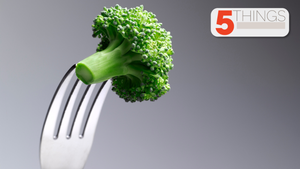Giant Still Towers Over Washington
THERE'S STILL A GIANT in the Washington, D.C., grocery market, but others are getting pretty big too. Despite only recently stabilizing several years of falling sales, Ahold's Giant-Landover chain still holds a commanding share of a large and lucrative Washington market, new figures from Tucson, Ariz.-based Metro Market Studies show. With 129 stores in the region, Giant controls 32.1% of the market
JON SPRINGER
THERE'S STILL A GIANT in the Washington, D.C., grocery market, but others are getting pretty big too.
Despite only recently stabilizing several years of falling sales, Ahold's Giant-Landover chain still holds a commanding share of a large and lucrative Washington market, new figures from Tucson, Ariz.-based Metro Market Studies show. With 129 stores in the region, Giant controls 32.1% of the market — bigger than the next two highest-ranked food retailers (Safeway and Shoppers Food Warehouse) combined.
Metro Market defines the region as Washington and 20 surrounding counties in Maryland, Virginia and West Virginia comprising 5.5 million inhabitants. It's the eighth-largest market in the U.S. in terms of population and one of the highest indexing in terms of buying income, retail sales and food store sales. Until recently it was relatively free from supercenter competition, but that is among the many things changing there.
Giant's large lead in Washington is by no means a comfortable one. The rash of new competitors now climbing up the market-share charts - as well as Giant's own actions behind a reconfigured brand and new store positioning — tells the story.
Giant is in the midst of a three-year, 100-store renovation program that's bringing much-needed attention to an aging store base. There is much to update, including a new logo, and a showcase for what officials call an offering that combines strong pricing — the result of a painstaking process of SKU reductions and negotiations with suppliers — and product quality.
Giant's market share showed a slight drop from 2008, when it controlled 32.4% of the market.
Safeway during the same period grew slightly, to a 19% share, as it rode the effects of a comprehensive store renovation program and some new urban stores including the City Vista project in the District of Columbia. Like Giant, Safeway is a longtime resident of the region under pressure to update its stores while competitors build new ones.
Supervalu's Shoppers Food & Pharmacy has an 8.5% share, operating 43 high-volume stores targeting price-conscious shoppers looking for value. Delhaize's Food Lion recently attacked that market more aggressively by turning some Food Lion stores into the new Bottom Dollar concept. In more affluent neighborhoods, switching Food Lion stores to the Bloom concept has driven double-digit sales increases, sources said. Food Lion operates 70 stores in the market overall.
Newcomers like Harris Teeter (22 stores, 3.9% market share) have been very aggressive gathering real estate, sources said. Its emphasis on service has done well among affluent shoppers, and its commitment to the market was underscored by a recently announced agreement to build a $101 million distribution center in Virginia.
“Harris Teeter has been very inventive in the layouts they are willing to do — they really have done some ingenious designs — and that got them into some markets they would not have otherwise,” Sam Hodges, a principal with real estate services firm KLNB in Vienna, Va., told SN earlier this year.
No newcomer to the market has made quite the same impact as Wegmans Food Markets, which has built five stores in the area and gained a 2.4% share of the market.
DISTRICT OF COLUMBIA
| RETAILER | STORES | MARKET SHARE '09 | MARKET SHARE '08 |
|---|---|---|---|
| Giant Food | 129 | 32.1 | 32.4 |
| Safeway | 106 | 19.0 | 18.7 |
| Shoppers Food & Pharmacy | 43 | 8.5 | 9.2 |
| Costco | 13 | 7.8 | 7.3 |
| Food Lion, Bloom, Bottom Dollar | 70 | 5.8 | 6.6 |
| Harris Teeter | 22 | 3.9 | 3.5 |
| Whole Foods Market | 14 | 3.1 | 3.1 |
| Wegmans Food Markets | 5 | 2.4 | 1.6 |
| 7-Eleven | 427 | 2.3 | 2.5 |
| Wal-Mart Supercenter | 5 | 1.8 | 1.4 |
| BJ's Wholesale | 6 | 1.6 | 1.5 |
| Sam's Club | 6 | 1.5 | 1.6 |
| Supervalu | 35 | 1.4 | 1.5 |
| Trader Joe's | 12 | 1.3 | 1.4 |
| Magruder Markets | 7 | 1.0 | 1.2 |
Includes District of Columbia, plus Calvert, Charles, Frederick, Montgomery and Prince George's counties in Maryland; Alexandria, Falls Church, Fredericksburg, Manassas and Manassas Park in Virginia; Arlington, Fairfax, Fauquier, Loudoun, Prince William, Spotsylvania, Stafford and Warren counties in Virginia; and Jefferson County in West Virginia.
SOURCE: Metro Market Studies
About the Author
You May Also Like






